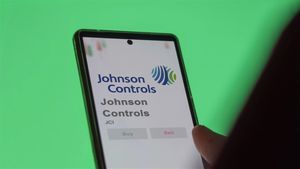SafeAir Certified Mold Inspection Inc., a leading provider of professional mold inspection and testing services in Georgia, has released an in-depth blog titled “Will Ozone Kill Mold? A Comprehensive Guide to Mold Remediation.” The article provides clear, factual information about the use of ozone in mold treatment, helping readers understand its effectiveness, risks, and limitations. The publication underscores the company’s ongoing commitment to educating homeowners and property managers about safe and effective mold control methods.
The new blog aims to clarify one of the most common questions in mold remediation: whether ozone can actually eliminate mold growth. Drawing from industry research and years of field experience, SafeAir Certified Mold Inspection Inc. explains that while ozone can temporarily reduce odor and kill some airborne particles, it does not remove the root cause of mold. The article stresses that proper remediation involves identifying and correcting the source of moisture, safely removing contaminated materials, and conducting professional testing to confirm that the environment is safe.

Marketing Director Alex Laldin emphasized the importance of reliable information in addressing mold problems. “There’s a lot of misinformation online about using ozone machines to get rid of mold,” said Laldin. “Our goal with this blog was to provide homeowners with factual, science-based guidance. Ozone may sound like a quick fix, but it’s not a complete solution. Mold remediation requires professional assessment and treatment to make sure the problem doesn’t return.”
Laldin further explained that ozone can create a false sense of safety if used without understanding its limits. “Ozone can mask the smell of mold, but that doesn’t mean the spores or the moisture issue have been eliminated,” he noted. “The key to real mold removal is addressing the underlying cause, not just the symptoms.”
The blog post also highlights the health concerns related to ozone exposure. It explains that ozone, when present at high concentrations, can be harmful to humans and pets. Prolonged exposure may irritate the lungs and worsen conditions such as asthma or allergies. SafeAir’s article encourages readers to prioritize health and safety by working with certified professionals who use approved inspection and remediation practices. “Our mission is to protect families from the hidden dangers of indoor mold,” Laldin added. “We believe the best way to do that is through education and expert testing.”
SafeAir Certified Mold Inspection Inc. has built its reputation on providing precise and unbiased mold inspection services across Georgia. The company uses advanced air sampling and surface testing methods to detect mold and assess air quality. Each inspection is followed by a detailed report that helps clients understand their results and plan the appropriate next steps. This process ensures accuracy and transparency, two qualities that have made SafeAir a trusted name in environmental testing.
In the new article, SafeAir explains that effective mold remediation always begins with proper inspection. The company stresses that identifying the moisture source is essential to prevent recurring growth. Whether the issue is caused by leaks, humidity, or poor ventilation, finding and fixing the source ensures lasting results. Once the problem is identified, a licensed remediation specialist can remove contaminated materials and restore the affected area safely.
Alex Laldin also shared that SafeAir’s educational approach is part of a larger commitment to community awareness. “We believe informed homeowners make safer choices,” he said. “Many people try DIY ozone treatments because they seem easy and affordable, but they often end up making the situation worse. Mold spores can spread if disturbed improperly. Our blog encourages readers to think critically about quick solutions and focus instead on proven, professional methods.”
The article concludes with practical advice for homeowners who suspect mold. It recommends scheduling a certified inspection before attempting any treatment. Testing helps confirm the type and extent of mold growth and ensures that any remediation plan addresses the full problem. The post also reminds readers that mold can grow in hidden areas like behind walls or under flooring, making professional assessment vital.
SafeAir Certified Mold Inspection Inc. continues to publish educational materials on mold prevention, air quality, and building safety. The company’s website features several guides and articles aimed at helping the public make informed decisions about their indoor environment. Through this new blog post, SafeAir reinforces its role as both a trusted service provider and an informational resource for residents and businesses in Georgia.
Alex Laldin summarized SafeAir’s philosophy by saying, “Our company was founded on the idea that safety starts with awareness. Mold can affect anyone, but with the right information and professional support, it can be handled effectively. This blog is one more step in helping people make better choices for their health and their homes.”
SafeAir Certified Mold Inspection Inc. is a Georgia-based environmental testing company specializing in mold inspection, air quality testing, and professional analysis of indoor environments. The company serves residential, commercial, and industrial clients across the state, providing accurate, independent testing services without performing remediation to ensure unbiased results. SafeAir uses state-of-the-art equipment and certified laboratories to identify mold and airborne contaminants, helping clients maintain healthy indoor air quality. Known for expertise, transparency, and integrity, SafeAir Certified Mold Inspection Inc. continues to be a trusted leader in mold detection and indoor environmental safety.
###
For more information about SafeAir Certified Mold Inspection Inc, contact the company here:
SafeAir Certified Mold Inspection Inc
Jeremy Shelton
4046950673
inspection@safeairtesting.com
2210 Defoor Hills Rd NW, Atlanta, GA 30318, United States






